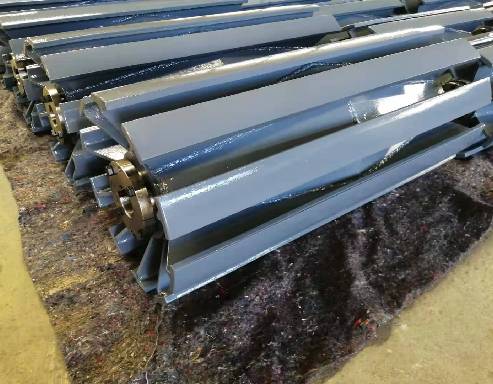 Afrikaans
Afrikaans  Albanian
Albanian  Amharic
Amharic  Arabic
Arabic  Armenian
Armenian  Azerbaijani
Azerbaijani  Basque
Basque  Belarusian
Belarusian  Bengali
Bengali  Bosnian
Bosnian  Bulgarian
Bulgarian  Catalan
Catalan  Cebuano
Cebuano  Corsican
Corsican  Croatian
Croatian  Czech
Czech  Danish
Danish  Dutch
Dutch  English
English  Esperanto
Esperanto  Estonian
Estonian  Finnish
Finnish  French
French  Frisian
Frisian  Galician
Galician  Georgian
Georgian  German
German  Greek
Greek  Gujarati
Gujarati  Haitian Creole
Haitian Creole  hausa
hausa  hawaiian
hawaiian  Hebrew
Hebrew  Hindi
Hindi  Miao
Miao  Hungarian
Hungarian  Icelandic
Icelandic  igbo
igbo  Indonesian
Indonesian  irish
irish  Italian
Italian  Japanese
Japanese  Javanese
Javanese  Kannada
Kannada  kazakh
kazakh  Khmer
Khmer  Rwandese
Rwandese  Korean
Korean  Kurdish
Kurdish  Kyrgyz
Kyrgyz  Lao
Lao  Latin
Latin  Latvian
Latvian  Lithuanian
Lithuanian  Luxembourgish
Luxembourgish  Macedonian
Macedonian  Malgashi
Malgashi  Malay
Malay  Malayalam
Malayalam  Maltese
Maltese  Maori
Maori  Marathi
Marathi  Mongolian
Mongolian  Myanmar
Myanmar  Nepali
Nepali  Norwegian
Norwegian  Norwegian
Norwegian  Occitan
Occitan  Pashto
Pashto  Persian
Persian  Polish
Polish  Portuguese
Portuguese  Punjabi
Punjabi  Romanian
Romanian  Russian
Russian  Samoan
Samoan  Scottish Gaelic
Scottish Gaelic  Serbian
Serbian  Sesotho
Sesotho  Shona
Shona  Sindhi
Sindhi  Sinhala
Sinhala  Slovak
Slovak  Slovenian
Slovenian  Somali
Somali  Spanish
Spanish  Sundanese
Sundanese  Swahili
Swahili  Swedish
Swedish  Tagalog
Tagalog  Tajik
Tajik  Tamil
Tamil  Tatar
Tatar  Telugu
Telugu  Thai
Thai  Turkish
Turkish  Turkmen
Turkmen  Ukrainian
Ukrainian  Urdu
Urdu  Uighur
Uighur  Uzbek
Uzbek  Vietnamese
Vietnamese  Welsh
Welsh  Bantu
Bantu  Yiddish
Yiddish  Yoruba
Yoruba  Zulu
Zulu idler in conveyor belt
The Role of Idler in Conveyor Belt Systems
Conveyor belts are an integral component of many industrial processes, serving as the lifeblood of material handling across various sectors, including manufacturing, mining, and logistics. A crucial yet often overlooked element of conveyor systems is the idler. This article explores the role of idlers in conveyor belt systems, their types, advantages, and maintenance considerations.
What is an Idler?
In conveyor systems, an idler is a supporting roller that holds up the belt and facilitates its movement. Typically, idlers are spaced at regular intervals along the conveyor belt’s length. They are essential for ensuring that the belt remains taut and follows the designated path, reducing sagging between load-bearing points. By doing so, idlers also enable efficient material transfer and contribute to the overall robustness of the conveyor system.
Types of Idlers
Idlers come in various designs and configurations, each tailored to specific operational needs. The primary types include
1. Carrying Idlers These are designed to support the weight of the materials on the conveyor belt. They are usually found along the loading section of the conveyor and can be constructed to handle varying loads and speeds.
2. Return Idlers Positioned underneath the conveyor belt, return idlers assist in supporting the empty belt as it returns to the loading area. These idlers help maintain the belt's alignment and prevent excessive wear.
3. Impact Idlers Located at points where materials are loaded onto the conveyor, impact idlers are designed to absorb the shock of heavy materials falling onto the belt. This significantly reduces the risk of damage to the belt and ensures longevity.
4. Training Idlers Used to keep the conveyor belt properly aligned, training idlers adjust the belt's path to avoid misalignment and associated operational issues.
idler in conveyor belt

Advantages of Idlers
The inclusion of idlers in conveyor belt systems offers a multitude of benefits
- Reduced Wear and Tear By providing support throughout the belt's length, idlers minimize sagging and lateral movement, which can lead to premature wear on the belt itself.
- Enhanced Efficiency Properly positioned idlers help reduce friction on the conveyor system. This efficiency not only prolongs the lifespan of the belt but also optimizes energy consumption, leading to lower operational costs.
- Improved Load Distribution Idlers facilitate even weight distribution across the conveyor belt, diminishing the likelihood of localized stress that can cause damage or failures.
- Cost-Effectiveness Although idlers represent an upfront investment, they can lead to significant cost savings over time by enhancing the durability and reliability of the conveyor system.
Maintenance Considerations
To ensure the longevity and effective operation of idlers, regular maintenance is crucial. Operators should conduct periodic inspections to check for wear and tear, misalignment, or buildup of materials around the idlers. Lubrication should be performed on moving parts to prevent friction and corrosion.
Additionally, it’s important to replace idlers showing signs of significant wear before they fail. Neglecting idler maintenance can lead to larger system malfunctions, costly downtimes, and even safety hazards in the workspace.
Conclusion
In summary, idlers are a vital component of conveyor belt systems, playing a key role in supporting the belt, enhancing operational efficiency, and reducing wear and maintenance costs. Investing in the right type of idlers suited for specific operational conditions can lead to vastly improved performance and reliability of conveyor systems. By prioritizing maintenance and timely upgrades, businesses can ensure that their conveyor systems run smoothly, thereby maximizing productivity and minimizing disruptions in their operations. Understanding the significance of idlers will foster a deeper appreciation for these essential components in the context of material handling technology.
-
Revolutionizing Conveyor Reliability with Advanced Rubber Lagging PulleysNewsJul.22,2025
-
Powering Precision and Durability with Expert Manufacturers of Conveyor ComponentsNewsJul.22,2025
-
Optimizing Conveyor Systems with Advanced Conveyor AccessoriesNewsJul.22,2025
-
Maximize Conveyor Efficiency with Quality Conveyor Idler PulleysNewsJul.22,2025
-
Future-Proof Your Conveyor System with High-Performance Polyurethane RollerNewsJul.22,2025
-
Driving Efficiency Forward with Quality Idlers and RollersNewsJul.22,2025





























